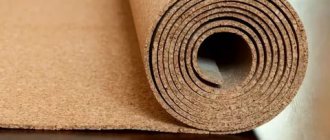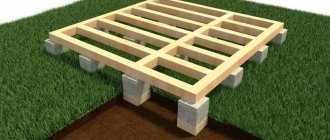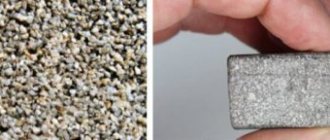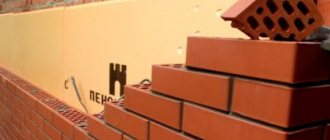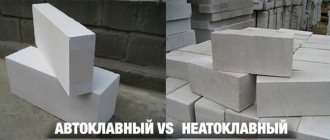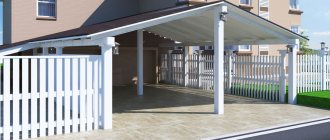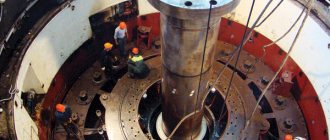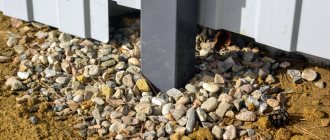What is a cinder block?
Cinder block is a domestic invention. The material was invented at the beginning of the 20th century. Even before the revolution, on the instructions of Nicholas II, a garage was erected from it in the courtyard of the Hermitage.
The author of the project was Nikolai Kramskoy. The creation of the son of the famous artist Ivan Kramskoy still stands today. In 2011, the Hermitage cinder block garage was restored and “adjusted” to modern standards.
Cars are different now, and the number of them in the museum is different. As for the cinder block masonry, it was preserved in satisfactory condition. The restorers only decorated the garage with plaster. 100 years is the predicted service life of a cinder block. But, as you can see, the material is capable of more.
The composition of cinder block is a mixture of concrete and slag. The material is named after the latter. Slag is taken from blast furnaces, that is, from metallurgical production. Basically, this is waste from iron foundries.
But, slags are also formed during the formation of other alloys, not only those based on iron. In any case, the waste is lighter than the main mixture. The slag floats to the surface of the melt, from where it is collected.
Slag is not just waste, but also a sorbent. It absorbs harmful impurities, leaving the final metal alloy pure and of high quality. Thus, slags draw phosphorus and sulfur into their pores.
The waste itself consists of oxides of calcium, silicon, magnesium, aluminum... Among the list there are several compounds known to the public as minerals. Silicon oxide, for example, is quartz - the basis of glass.
The minerals larnite, morvinite, and mellilite are also found in slags. In part, the composition is harmless. But, some impurities are toxic. Therefore, the production of cinder blocks is accompanied by their weathering in the air throughout the year.
What is cinder block made from?
Gray bulky blocks are made from a mixture of ash, blast furnace and boiler slag, brick, concrete and cement chips, crushed stone screenings (river and granite), volcanic perlite grains, sand, expanded clay and a number of other fillers. Cement serves as the connecting link for these components; the raw material mixture is mixed with water. The use of sawdust and pine needles in the creation of cinder blocks allows us to talk about the environmental friendliness and lightness of the material.
If you've never seen exactly how a cinder block is made, this video will satisfy your interest.
Characteristics and types of cinder block
Reducing the toxicity of cinder blocks and striving for their speedy sale, manufacturers over time began to change the formulation of the material. You can find slabs in which the proportion of slag is reduced, but expanded clay, sand, sawdust, broken brick and other waste substances are added.
This is how cinder blocks begin to overlap with expanded clay concrete and wood concrete, based on a mixture of cement and wood shavings. The boundary between materials is blurred. But, the classic version of cinder block: cement, sand and slag.
The latter, although lighter than cast iron melt, is very heavy. Therefore, the standard weight of a cinder block is 25-30 kilograms. Pulling such slabs is not an easy task.
There are lightweight cinder block options. They are hollow, that is, with cavities. “Air bags reduce the weight of the blocks to 18-23 kilograms, and also increase the heat capacity of the material and its noise-insulating properties.
If you need a cinder block house , as a rule, hollow samples are chosen. Solid residential buildings are usually built in hot climates, or with additional insulation.
Monolithic cinder blocks freeze quickly, although they are durable. Therefore, solid slabs are used to make porches, foundations of small buildings, garages and other buildings where a temperature comfortable for living is not required.
According to the configuration, there are not only full-fledged “bricks”, but also half-blocks. The latter, truncated in width, are used for partitions. The size of a half-type cinder block is : 390 by 120 by 188 millimeters versus the standard 390 by 190 by 188. At the same time, the weight of the half-block is 10-13 kilograms.
According to their external design, cinder blocks are divided into ordinary and with a decorative surface. The latter, as a rule, imitates natural stone, for example, granite or marble. This refers to the unevenness of natural rocks.
Although, the color of cinder blocks also changes. The material is difficult to paint. The color palette is limited to greenish, black, beige and terracotta.
It is possible to achieve the desired shade not only with the help of chemical dyes, but also with natural materials. Terracotta paint, for example, is the result of adding brick chips to blocks.
The decision to buy a cinder block should be accompanied by a study of slab brands. So, wall options come in 35th, 50th, 75th, 100th and 125th. The number indicates the density of the slabs. The higher it is, the greater the load the masonry can withstand.
So, only 125th and 100th cinder blocks are recommended for foundations. Plinths are also built from them. The 75th and 50th grades are intended for ground walls and interior partitions. Blocks marked “M-35” are used only for insulation.
Cinder blocks are also divided according to frost resistance. For external walls, for example, 30th and 50th markings are recommended. Most of them are intended for particularly cold regions. The brand number reflects the number of freeze-thaw cycles that the slabs will definitely survive.
Getting into the pores of the material and freezing in them, the water expands, pushing the slabs apart. As a result, a cinder block bathhouse may crack and lose its seal, like other buildings. Accordingly, “bricks” with the remaining 25th and 15th markings are used only for interior decoration or temporary buildings.
The properties of a cinder block are largely influenced by its composition, the type of slag and other fillers, and the brand of cement. Thus, the strongest and densest slabs are formed on the basis of 400 and 500 Portland cement. The number reflects the load in kilograms per cube that concrete products can withstand.
Of the slags, cast iron production waste gives building blocks the most strength. Although, more often coal slag is added to the “bricks”.
There is no need to be “afraid” of them. Coal production waste is finely dispersed. This makes pressing easier and makes the blocks dense and strong. Coal slag, by the way, is more alkaline than blast furnace slag and less toxic.
Features of laying cinder blocks
First you need to completely prepare the foundation.
The walls themselves must be erected in several stages. First, the foundation is made, then the first row is installed and further installation is carried out. When preparing the foundation, care must be taken to remove all contaminants. This can become an obstacle when performing work. After this, a waterproofing layer is laid. Usually roofing felt is used. The first row of cinder blocks should be laid on the prepared solution. Installation work should begin from the corners. Next, the structure should be leveled in height. For these works, use a level or laser level. You need to stretch a horizontal cord between the corners. This will allow you to accurately determine the boundaries of the walls.
The blocks must be laid so that the cavities are at the bottom. The solution needs to be coated not only on the edges, but also on the sides. The thickness should not exceed 10 mm. Builders often resort to one interesting trick. They add wood ash to the solution. This gives the mortar a black color and makes the finished building look more attractive.
Cinder block is an affordable, but at the same time very practical material. It is easy to make and easy to install. It is thanks to its technical characteristics that it has gained such wide popularity. This is a good material for the construction of various utility rooms, such as storage rooms, garages, sheds. But sometimes it is also used in the construction of living rooms.
Return to list
Cinder block production
Do-it-yourself cinder block , or in a factory, is produced by vibration pressing. This is the compaction of a rigid mixture of initial components. A dry workpiece is called hard.
They shake it from below or from the sides. This vibration leads to compaction of the material. A special press completes the formation of the blocks. It affects the “bricks” from above.
For vibrocompression you need a machine for cinder blocks . There are amateur and professional models. However, handicraft production proceeds, as a rule, without a vibropress.
In order not to spend money on it, entrepreneurs use only forms. These are metal trays into which concrete mixture is poured. Sometimes they are made from wooden planks. For convenience, cells are made for simultaneous pouring of several cinder blocks, increasing the length and width of the outer edges of the box.
All that remains is to pour the solution into the molds and create voids in the blocks. Use glass bottles. Only those who produce construction “bricks” in their yard or garage use them to press cinder blocks. In large industries, voids in blocks are made using metal tubes.
If you use bottles, you will have to remove the excess solution squeezed out by them. These residues can be used for new blocks. One bag of cement, by the way, is enough for about 40 standard-sized slabs.
There is no need for a special production room. Therefore, the production of slag concrete is called a successful business idea. However, it is worth considering the low demand for artisanal stoves.
They do not meet GOST standards. The consumer seeks to overpay, but be confident in the quality of the product. “Bricks” produced in-house are usually used on their own farm.
Types of building materials: how much does a cinder block weigh?
The weight of a cinder block depends on the actual volume of material. Let us remind you that a building block can be solid or hollow. There are three types of slag wall blocks on the modern building materials market, so let’s look at each group in more detail:
- A solid block is characterized by the absence of voids. This increases the reliability and strength of the material, but due to this the stone is much heavier compared to other types. Such building blocks are most often used to construct load-bearing walls and building foundations. The weight of these structures varies in the range of 25-29 kg.
- Hollow stone - often used only for the construction of walls, including load-bearing structures. The weight of one cinder block is 12-23 kg.
- A semi-block is a material in which voids predominate, so the stone is used only to create interior partitions. The weight of such a cinder block is about 9-13 kg.
Construction cinder blocks are produced in several varieties
According to GOST 6433-99 “Concrete wall stones”, the density of hollow blocks made of slag concrete mixture should not be higher than 1650 kg/m³, and solid structures – no more than 2200 kg/m³.
This is interesting! The weight of a building stone, in addition to its hollowness and density, is also influenced by the dimensions of the structure, so a large cinder block measuring 20x20x40 cm will have the greatest weight.
Pros and cons of cinder block
If we talk about blocks made according to standards, their advantage is the ease of laying. Her technique is accessible to everyone. If it weren't for the weight of the blocks, even the children would have laid them. In addition, cinder blocks are of no interest to rodents, fungi and other biogenic destroyers.
Does not take material and fire. From the point of view of fire hazard, the hero of the article is one of the best concretes, since both blast furnace and coal slag are refractory. It takes thousands of degrees to soften them.
The advantages of cinder block also include its price. Let's talk about it separately. For now, let’s say that you will spend about 40,000 rubles on a spacious garage for two cars. This is subject to the purchase of standard slabs with cavities occupying about 28% of the volume. Costs for adhesive solution are not taken into account.
Now, let's criticize the cinder block. The disadvantages of the material are significant. Firstly, the hero of the article is easily destroyed by moisture. We have to cover cinder block houses with facades. The simple solution seems to be plaster.
However, it does not adhere well to the surface of the slabs. After a few years, the coating begins to crack and fly off the walls. Before plastering the Hermitage garage, by the way, it was lined with ordinary brick.
He hid the ancient cinder block masonry, but made the walls from it suitable for repair. Plus, with a brick shell, early 20th century slabs have less reason to continue to age.
The second disadvantage of cinder block is the ban on multi-story construction. Maximum - houses with 3 floors. Their construction from the hero of the article is possible by pouring a concrete armored belt. Typically, 1-2-story houses are built from cinder blocks.
At the same time, neighbors whisper about the toxicity and even radioactivity of the blocks. Indeed, almost the entire periodic table is found in slags. It's no secret that some of it is hazardous to health.
In order not to undermine yours, it is worth purchasing a cinder block, which is accompanied by the results of the examinations. Do you have a dosimeter? Test the material for radioactivity. There is no evidence of its detection in cinder blocks. But, to calm your soul, a test won’t hurt.
Dimensions of cinder blocks: composition and proportions of material
Cinder block is a type of building stone that is quite widely used in the construction of modern buildings. It is used to create load-bearing structures, interior partitions and lightweight foundations. Such blocks are used in both private and commercial buildings.
Cinder blocks can be made from various materials
It should be noted that a variety of raw materials are used for the solution from which cinder blocks are formed, so the composition of cinder blocks does not have a strict recipe. Most often, a sand-cement mixture is used as a base, which is subject to vibrocompression in special forms. Various fillers and components are used as additional additives, which increase the quality, strength and frost resistance of finished premises.
What is cinder block made from? To create this building stone, a mixture of the following components is most often used:
- expanded clay stone;
- finely crushed bricks;
- sawdust;
- metal smelting waste - slag;
- perlite;
- gypsum;
- sand.
According to production technology, the following proportion for the mixture is usually used: 9:1 (nine parts of slag and one part of cement). Water for the solution is taken in the ratio of half of the total volume of all components. It should be noted that this is a standard technology, which may differ from one manufacturer to another depending on the components used.
It is important! You need to know that cinder block walls should not exceed the third floor in height. For the construction of taller buildings, it is better to use combined masonry.
Most often, a sand-cement mixture is used to produce blocks.
Cinder block house: what you need to consider
- If a cinder block is involved in the construction of a house, you cannot do without a high and strong strip foundation.
- The base also needs to be made high: in the future this will protect the lower part of the house from getting wet.
- The cinder block wall is very dense, which means that unexpected difficulties may arise during the installation of pipes and electrical wiring. Often, builders use special equipment to lay pipes. In any case, this issue is considered in advance, even before the house is built.
Most often, cinder blocks are used in the construction of cottages and outbuildings. With the help of this wall stone, large channels and air ventilation chambers are erected in houses. Cinder blocks can also be seen as paving slabs and curb stones.


